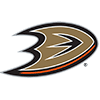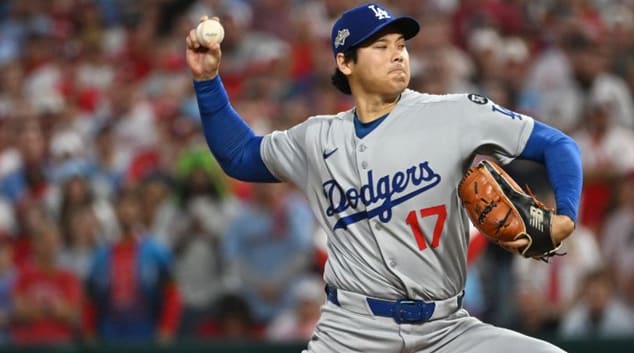If you want to win your fantasy baseball league, typically you need to average around the 80th percentile per category in a standard 5x5 league. If you want to win an overall contest, that number tracks upwards of 90th percent per category. In 2018 in the NFBC RotoWire Online Championship, it took 314 homers to reach that 80th percentile; last year, that number skyrocketed to 377. In fact, 315 homers merely got you to reach the 20th percentile.
Every year when we begin this exercise of preparing for the upcoming fantasy season, we need to ask "what is the run scoring environment going to be like?" And in turn, that raises the question about the supply of baseballs -- will they retain the "Happy Fun Ball" (do not taunt Happy Fun Ball) qualities of the 2019 season, or will they more resemble the less lively "playoff baseballs" from last year's playoff run? Certainly there are other contributing factors to the home-run explosion in the game (changes in swings, training routines, the polarization between competing and non-competing teams), but everything starts with the ball. And our best guess at what the ball will be like drives the entire projection process.
Let's define in another way how much the home-run environment has changed. As you can see, this latest trend began in 2015, though we thought it peaked in 2017, a season that broke all sorts of records for home runs by a wide margin. Instead, 2019's homer totals blew 2017's away.
| SEASON | HR/G | TOTAL HR |
| 2014 | 0.86 | 4186 |
| 2015 | 1.01 | 4909 |
| 2016 | 1.16 | 5610 |
| 2017 | 1.26 | 6105 |
| 2018 | 1.15 | 5585 |
| 2019 | 1.39 | 6776 |
It's been alleged, by Justin Verlander most prominently, that Major League Baseball purposefully altered the ball to increase homers, in conjunction with their purchase of Rawlings, the company that manufactures the baseballs. However, that sale wasn't completed until midseason 2018, and the home-run trend started well before that. It's possible that they had plenty of influence with Rawlings prior to the purchase -- when you manufacture baseballs and MLB is your principle client, you listen. But the purchase isn't necessarily the smoking gun that it seems. For its part, MLB says that while there was less drag on the baseball due in part to variability in seam height, they also said there was no change in the manufacturing process nor any purposeful directive to change the liveliness of the ball. Nor do they intend to change their processes, basically telling teams and pitchers, "... tough, just live with it...."
All of this ties into our best guess about the ball for the 2020 season. I say "best guess" because it's not as if the Commissioner's Office is going to make a major announcement trumpeting any changes. Logic would suggest that there are still many baseballs remaining in the current batch, even if Rawlings, at the direction of Major League Baseball, did something different in the manufacturing process to create more drag. So even if there was a material change, we might not see the impact of such change until the middle of the season. And as alluded to earlier, MLB is not going to publicly acknowledge such a change. With that in mind, I tend to think the home-run rate will remain fairly similar to 2019, perhaps fading back a little bit to the levels set in 2017. I doubt we're going to see a stark regression to the pre-2015 era.
Going back to the 80th percentile goal, for homers that means we're going to need closer to the 377 that was needed last season than the 314 that was required in 2014. In most standard leagues, as with the NFBC, we have 14 hitter slots. To reach that goal, we need nearly 27 homers per hitter slot, and that includes two catcher slots. If you're in the NFBC or any other overall contest (RTSports, TGFBI, etc...), you can't simply punt the category either -- you have to try to reach those goals while still competing in the other categories. So that makes it really difficult to draft players with no power. Dee Gordon used to go in the third or fourth round in these contests. His ADP in early January is 257, and the earliest he's gone in any NFBC draft is 182. It's just so difficult to get the power you need when you spend a non-catcher slot on a guy with zero power. Even among catchers, the no-power tax is felt. Buster Posey has hit a combined 12 homers the last two seasons, and this year his ADP is down to 272. There are a handful of catchers with 20-plus homer power, and plenty more that hit 10-15 homers.
This focus on power has a big impact on other categories, most notably speed. If you can't use a player like Dee Gordon or Billy Hamilton, where are you going to get your speed? The good news for us is that stolen bases are down across the board in baseball.
That also means the targets we need to hit are lower. In 2018, the 80th percentile in stolen bases was 145. Last year it was 135. The gaps between standings points are also smaller -- 70th percentile was 127 stolen bases, 50th percentile was 114, and 20th percentile was 92. You don't need a player with 40 stolen bases to compete in the category. You need to average between 9-10 bags per hitting slot to get there. Once again accounting for the two catcher slots, that really means about 11 stolen bases to get there. That's not quite as daunting!
And yet, the trick is to find those stolen bases without losing ground in the power categories. Mallex Smith led baseball in stolen bases last year with 46, but he also homered six times in 134 games and was briefly sent to the minors. Do you really feel confident that he's going to keep his job all season, when Seattle has to find room for Mitch Haniger and Jake Fraley, with Jarred Kelenic and Julio Rodriguez pounding on the door? Even if he does keep his job and deliver those stolen bases, you still need to make up 20 homers from another spot on your roster. When you draft a speed specialist, you essentially need a power specialist as well -- and an injury or regression to either player sets you back badly.
So perversely, even with stolen bases down, you're in a pinch to find stolen bases with your early picks, with players that also hit for power and average. They're not quite unicorns, but they're much harder to find. If you begin your draft with Nolan Arenado (three stolen bases in 2019) in the first round and Yordan Alvarez (0 SB in 2019) in the third round, you're almost locked into finding one of those stolen-base specialists later, if not two. And that's why you're starting to see those players slip in ADP. Arenado's January ADP is 12.43, and he's dropped as late as 19th in the NFBC. Alvarez carries a 39.49 ADP, and once dropped as late as 59th.
Finding speed has always been a point of weakness for me in the NFBC. I came to the realization last fall that I need to treat the power-speed guys the same as I treat closers. Closers aren't quite one-category players, but because they are the only players that do provide saves, you have to pay more for them than what they are worth in pure dollar values. The same holds true with 20-20 hitters -- they are "loss leaders." If you miss out on them as a class, you'll be chasing all season -- from the middle of the draft through the weekly free-agent bidding opportunities. And with the latter class, remember that those are players the whole league didn't deem as worthy of being drafted in the first place. They may provide a windfall for you, but as a whole they are a lot more volatile. So go and get yourself a solid foundation in your draft early on to lessen that volatility on your roster.
Who are those foundation pieces? Let's use last year's 20-20 players as a starting point, fresh with the knowledge that those are arbitrary endpoints, and that the general idea is to find players that provide both power and speed. Like last year, we'll also include 30-10 and 10-30 players.
20-20 BATTERS
Jonathan Villar (24-40)
Ronald Acuna Jr. (41-37)
Christian Yelich (44-30)
Tommy Pham (21-25)
Starling Marte (23-25)
Jose Ramirez (23-24)
Trevor Story (35-23)
Francisco Lindor (32-22)
Danny Santana (23-31)
30-10 BATTERS (EXCLUDING THOSE ALREADY LISTED)
Bryce Harper (35-15)
Cody Bellinger (47-15)
Juan Soto (34-10)
Austin Meadows (33-12)
Rougned Odor (30-11)
Mike Trout (45-11)
Marcus Semien (33-10)
Ketel Marte (32-10)
10-30 BATTERS
Trea Turner (19-35)
Elvis Andrus (12-31)
Last year 16 batters made this list, this year we have 19. But the acquisition cost remains high for them. Two players fall in the 51-100 range, Tommy Pham (72) and Marcus Semien (80). Three more are over 100 -- Danny Santana (125), Elvis Andrus (127) and Rougned Odor (234). Perhaps we have a distrust of Rangers players in their new ballpark? Globe Life Field opens up this spring and will have a retractable roof, which means the extreme heat will no longer play a big role in the carry of the ball. Such an arrangement has served to re- strict power in Minute Maid Park down the road in Houston.
Two players made the 100-plus ADP list last season, with divergent results. Tim Anderson had a breakout year, just narrowly missing these categories because he missed time with an injury. He ended up hitting .335 with 18 homers and 17 steals, netting you a huge profit from his 140 ADP. Ian Desmond struggled to hit for average and stopped running, netting you only three stolen bases to go with his 20 homers.
You can open up the ranges on these targets to add to your pool, as there are a handful of players that miss one or the other benchmark by a unit or two. These are backwards looking, so if you have a set of projections that you trust, you can use that instead of last year's stats. But getting a handful of these players early can save you from some pain in the middle-to-late stages of your draft.
How can we afford to add these power-speed guys? I think it has to come at the expense of an early closer. For the third year in a row, our benchmarks to compete in saves declined. In 12-team leagues, it only took 82 saves to hit the 80th percentile, down from 88. The 70th percentile, 50th percentile and 20th percentile were also down five saves apiece. For the third consecutive season, 11 or fewer closers had 30-plus saves, as teams continue to spread their save chances around. We're in a new era where more teams manage their bullpens differently, not hewing to the traditional closer model. Once again, there's value in spreading your risk at the draft table when it comes to chasing saves. Don't spend two valuable top-10 picks on closers. Steer into the curve and embrace the volatility of the position, using that extra spot to acquire a power-speed player, or another starting pitcher in a quest to acquire enough strikeouts.
These are just a few general tips to build a competitive roster. The more specific your league format is, the more detailed the strategy needs to be, but these overall trends will help drive your strategy.
This article appears in the 2020 RotoWire Fantasy Baseball Guide. You can order a copy here.























